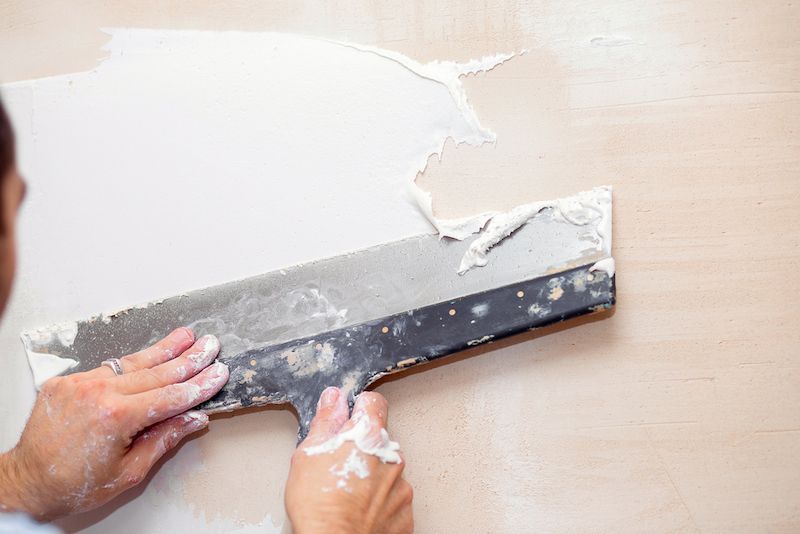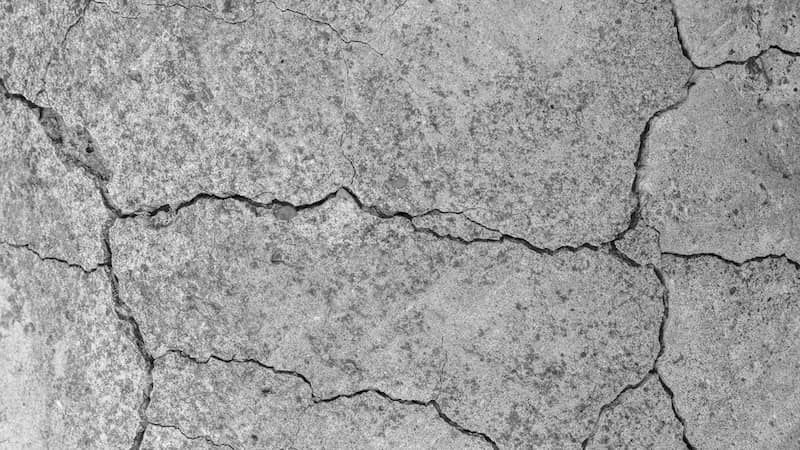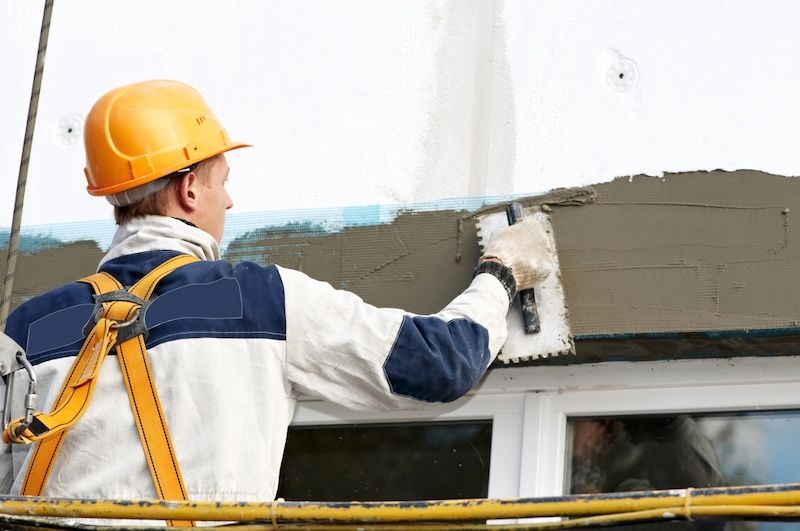Tradition Meets Modernity: A Comparative Guide to Types of Stucco Finishes
Stepping into the world of stucco finishes opens up a realm of textures and styles, each with its own unique appeal. Whether you’re refurbishing an old home or embarking on a new construction project, understanding the different types of stucco finishes is essential. Traditional stucco finishes like lace and skip or cat face stucco have been time-tested, offering a rustic charm. On the flip side, contemporary options such as a smooth stucco finish or a Santa Barbara finish bring a sleek, modern aesthetic.
The types of stucco texture, from smooth to coarse, serve a distinct purpose and complement various architectural styles. These finishes enhance the appearance and provide a durable protective layer for your structure. So, as you delve deeper into the types of stucco finishes, you'll find a spectrum of possibilities that can transform a mundane facade into a visually captivating exterior. Your choice between traditional or synthetic, fine or coarse, and smooth or textured stucco finishes could very well set the tone for your abode's overall ambiance.
In the sections that follow, we’ll walk you through the aesthetic and practical aspects of traditional and contemporary stucco finishes, helping you make an informed choice for your project.
Understanding Stucco: A Primer
Stucco has been a popular choice among homeowners and architects for years, owing to its versatility and aesthetic appeal. Delving into the world of stucco, you'll find a range of finishes and textures that can seamlessly align with the architectural style of your project.
Definition and Basic Application of Stucco Siding Material
Stucco is essentially a fine plaster used to coat wall surfaces or mold into architectural decorations. When used as a siding material, stucco provides a durable, low-maintenance, and attractive option. Its application involves adding several layers onto a wood or metal lath, with a final layer known as the finish coat. With an array of textures, from smooth to coarse, stucco finishes provide a unique charm and a distinctive look.
Diverse Stucco Varieties: Traditional, Synthetic, and Acrylic Explained
The realm of stucco extends to various types, each with its unique traits. Traditional stucco, known for its hardy and classic texture, is made from lime, sand, and cement. On the other hand, synthetic stucco mimics traditional stucco but has a foam insulation layer, which traditional stucco lacks. Lastly, acrylic stucco is a newer type, known for its flexibility and wide range of color choices. It also adheres to many surfaces where traditional stucco can't.
Exploring different types of stucco finishes and textures is crucial in making an informed decision that complements the style of your home or building project. Whether you lean towards a traditional, synthetic, or acrylic stucco, each type offers a unique aesthetic and functional advantage.
Traditional Stucco Textures
The charm of traditional stucco textures has been appreciated for centuries, providing a classic, enduring aesthetic. Unlike other siding materials, traditional stucco is applied by hand, which not only ensures a unique texture but also a durable finish that can stand the test of time.
Lace and Skip
Lace and skip is a popular traditional stucco texture, known for its versatility and timeless appeal. This texture is created by applying stucco in a skipping motion, leaving behind a pattern resembling lace. It's a technique that demands a skilled hand, but the result is a beautiful, intricate texture that provides a rich look to any building.
Cat Face
Cat face texture is characterized by small circles of smooth texture amidst a rougher background. The contrasting smooth and rough textures create a unique look, providing an old-world charm that is hard to replicate with other types of stucco finishes.
Sand Float
The sand float stucco texture is achieved by mixing sand particles in the stucco, which is then applied by hand using a float tool. The result is a coarse, sandy texture that provides a warm, earthy feel to the structure. This texture is synonymous with adobe-style or Mediterranean architectural designs.
Dash Finish
Dash finish is a rough stucco texture applied using a method where stucco is dashed onto the surface, either by hand or with a small hopper gun. This texture provides a rustic look, hiding imperfections and providing a durable surface.
Traditional stucco textures are often associated with architectural styles such as adobe or Spanish-style structures, adding a historic charm to these buildings. Regionally, places with a rich historical heritage or Mediterranean climate, like San Diego or Santa Barbara, tend to favor traditional stucco finishes, reflecting a timeless architectural tradition that resonates with the local ambiance. Through the blend of artistry and technique, traditional stucco textures create a captivating exterior that embodies a sense of historical richness and architectural integrity.
Contemporary Stucco Finishes
The modern era brings with it a refined aesthetic in stucco finishes that resonate with sleek design and minimalist appeal. Contemporary stucco finishes are a testament to the evolving architectural tastes, aligning seamlessly with modern, minimalist, or industrial design paradigms.

Smooth Finish
A smooth stucco finish, as the name implies, offers a sleek, refined look. Achieved through a meticulous application process using a pool trowel, this finish requires a skilled hand to ensure a uniform coat. Its simplicity and elegance make it a favored choice for modern and minimalist architectural styles.
Santa Barbara Finish
The Santa Barbara finish is known for its subtle texture and is lighter than a traditional smooth finish. It’s often achieved using a fine cement-based finish which is applied thinly to attain that slightly mottled look. This texture carries a hint of traditional aesthetic while maintaining a modern appeal, blending well with various contemporary architectural styles.
Custom Finishes
Custom finishes allow for a unique texture, tailored to personal preferences or architectural demands. Techniques may include using modern tools like a hopper gun for application, enabling a range of textures from semi-smooth to coarse finishes. Custom finishes provide an avenue for creativity and individual expression in modern architectural designs.
The application methods for contemporary stucco finishes have seen a shift towards utilizing modern tools which ensure precision and a refined finish. Regions with a modern architectural landscape, like San Diego, often lean towards these contemporary stucco textures, embracing the fresh, sleek look they impart. As you explore these finishes, you'll find they offer a crisp, clean backdrop that accentuates the modern design elements of your project. Whether you opt for a smooth finish or a custom texture, contemporary stucco finishes bring a modern elegance that elevates the architectural aesthetics to a new pinnacle.
Fine, Medium, and Coarse: The Spectrum of Stucco Textures
The world of stucco offers a diverse palette of textures that cater to various aesthetic and practical preferences. These textures, spanning from fine to coarse, can be achieved with both traditional and modern stucco finishes, each bringing a unique character to a building's facade.
Fine Textures
Fine textures like smooth stucco provide a sleek, modern appeal. Achieved through precise application methods, such as using a pool trowel to create a smooth surface, these textures lend a minimalist and contemporary charm to structures. Their ability to hide imperfections while offering a polished look makes them a preferred choice for modern designs.
Medium Textures
Medium or heavy textures, such as lace texture, strike a balance between the sleekness of fine textures and the rugged appeal of coarse ones. They are versatile finishes that can be crafted using traditional or synthetic stucco, applied with tools like a hopper gun to achieve a distinct lace effect. These textures are excellent at hiding rough patches and minor imperfections, making them a practical choice for a range of architectural styles.
Coarse Textures
Coarse textures like sand float or dash finishes embody a rustic, earthy aesthetic. Achieved through methods like mixing sand particles in stucco or flicking stucco onto surfaces, they add a tactile dimension to the facade. While they may accentuate imperfections, their bold texture contributes a unique character and traditional charm to buildings.
Understanding the spectrum of stucco textures and how they can be achieved in both traditional and modern stucco finishes helps in making an informed choice. Whether you aim to hide imperfections or accentuate a unique architectural style, the right texture can immensely enhance the aesthetic and functional appeal of your project.
Choosing Between Traditional and Contemporary: Factors to Consider
The choice between traditional and contemporary stucco finishes hinges on various factors each catering to specific preferences and needs. Here are some considerations to guide your decision-making process.
Budget
Your budget is a paramount factor. Traditional stucco is generally more cost-effective upfront but might require more maintenance down the line. Contemporary finishes like synthetic stucco can be pricier initially, yet their maintenance could be less demanding.
Maintenance and Longevity
Consider the ease of maintenance. For instance, smooth textures are easy to patch, while rougher textures like sand finish may pose challenges. Longevity is another consideration; a well-applied stucco finish can last over a year, protecting your structure while retaining its aesthetic appeal.
Desired Aesthetic
Your desired aesthetic will significantly influence your choice. Traditional stucco finishes like lace texture exude a classic charm, while smooth finishes resonate with modern, sleek architectural designs.
Versatility and Finish Features
Examine the versatility of different finishes. Some stucco finishes are very versatile, adapting to various architectural styles. Explore finish features that appeal to you, like the unique texture of a cat face finish or the refined look of a Santa Barbara finish.
Individual Preferences and Architectural Demands
Lastly, align your choice with your personal preferences and the architectural demands of your project. Whether you prefer a basic and simple kind or a more elaborate finish, ensure it complements the architectural style of your structure.
A thorough examination of these factors, balanced with your preferences and the architectural essence of your project, will lead you to a stucco finish that not only meets your expectations but enhances the visual and functional quality of your building.
Uncovering Potential with Various Types of Stucco Finishes: Your Guide with Stucco Company
As we traverse through the spectrum of stucco finishes, it's evident that each type, be it traditional or modern, brings a distinct charm and functionality to the table. From the rustic allure of lace and sand textures to the sleek modernism of smooth finishes, the types of stucco finishes are as diverse as they are captivating.
Your project deserves a finish that not only aligns with its architectural spirit but also stands the test of time. Whether it's the timeless appeal of traditional stucco or the modern sophistication of contemporary finishes, striking a balance could result in a facade that's both aesthetically pleasing and enduring.
Consider the fine, medium, or coarse textures, each offering a unique touch, while the ease of patching and maintenance requirements also play crucial roles in your decision. Orlando Stucco Repair Pros is a commendable mention for those seeking expertise in exploring the right stucco finish for their projects.
In conclusion, embarking on the exploration of different types of stucco finishes is a venture into blending tradition with modernity, practicality with aesthetics. Your choice of stucco finish is a significant stride towards not only achieving a desirable visual appeal but also ensuring a lasting protection and value for your structure.


